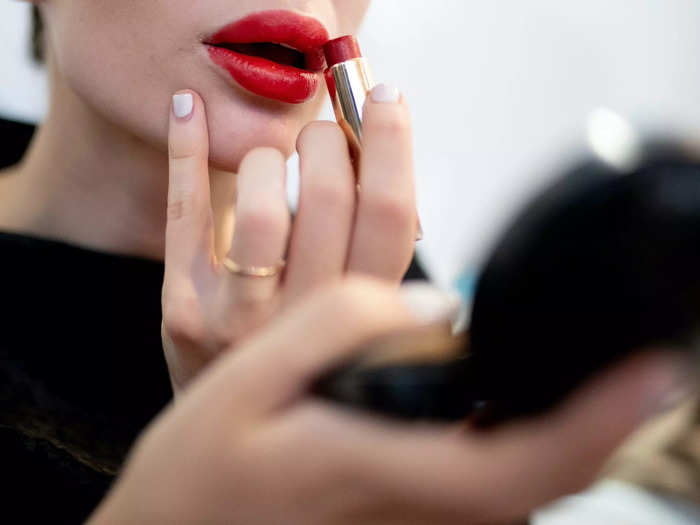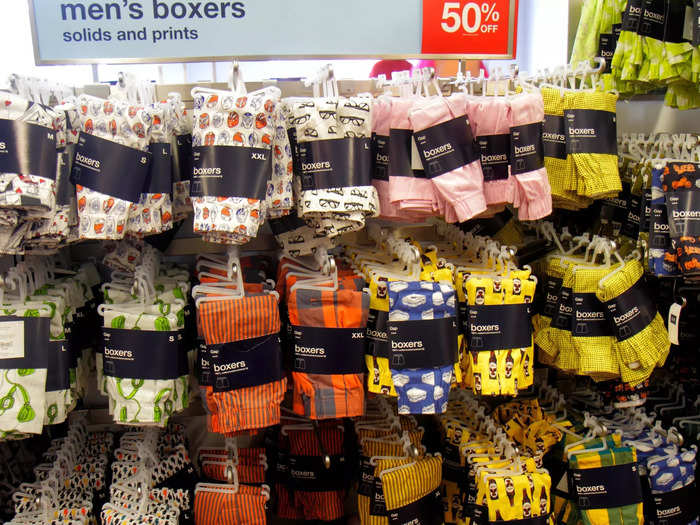Why economists study hemline lengths and men's underwear sales for clues we could be headed for a recession
Avery Hartmans

- Economists have tracked all sorts of buying behavior over the years that indicates the health of the economy.
- For example, one measure called the lipstick index says that people buy more little luxuries, like lipstick, when the economy is worse.
Lipstick index

What is it?
The creation of the lipstick index is widely attributed to Leonard Lauder, one of the billionaire heirs to the Estée Lauder cosmetics fortune.
Back in 2001, when the US economy was in the throes of a recession, Lauder noticed that lipstick sales were actually rising, not falling. Lauder's theory was that lipstick sales and the health of the economy were in inverse proportion to one another — essentially, as the economy got worse, lipstick sales got better.
Can it actually predict a recession?
The lipstick index has borne out several times throughout history. Lipstick sales at mass retailers were up 11% back when Lauder invented the index; some of the world's biggest cosmetics brands reported a sales boost in 2008 as the US headed into a recession; and even though high inflation has stayed a constant in the US over the past several months, beauty sales have boomed.
Still, lipstick probably isn't a reliable recession indicator — there are plenty of times when cosmetics sales have boomed during times of relative economic prosperity and dipped during downturns.
Underwear index

What is it?
The men's underwear index was probably made most famous by former Federal Reserve Chair Alan Greenspan. The theory states that when the economy worsens, men will stop buying new underwear, since it's a garment most people won't see on a daily basis. Then, when the economic outlook improves, they'll start replacing their boxers or briefs again.
Can it actually predict a recession?
It's not foolproof, but there are instances where Greenspan's theory was correct. Men's underwear sales dipped in 2008 and 2009, during the Great Recession, and rose between 2010 and 2015, according to Euromonitor data. US sales of men's underwear also dipped dramatically in 2020 amid the uncertainty of the pandemic before rebounding in 2021, Bloomberg data shows.
Hemline index

What is it?
Developed in the 1920s, the hemline index asserts that skirts and dresses get shorter when the economy is doing well and longer during a downturn.
Can it actually predict a recession?
Almost certainly not, but there are times when the theory has been proven out. The mini skirt became trendy in the 1960s while the economy was booming, but when the oil crisis hit in the 1970s, skirts got longer again, as Bloomberg noted. And in early 2022, the ultra-mini skirt, also called the micro mini, was the "it" item for spring — now, after months of sky-high inflation and renewed fears about an impending recession, the ankle-length maxi skirt is one of spring's hottest trends.
Cardboard box indicator

What is it?
The thinking goes that cardboard boxes can act as a barometer for the health of the economy, since they play such a crucial role in transporting goods — not just to consumers who buy things online, but to stores and warehouses that receive those goods in bulk. That means that if demand for cardboard is slowing, consumers are buying less stuff.
Can it actually predict a recession?
This indicator is more accurate than some of the others, since there's such a direct correlation between cardboard demand and consumer purchasing. Back in early 2009, as the US was in the midst of a recession, cardboard shipments declined drastically and US cardboard manufacturers' operating rates dipped as well. A similar trend arose in early 2023: the Fibre Box Association, a trade group that represents the industry, reported that cardboard shipments had fallen 8.4% in the fourth quarter of 2022, the steepest decline since the financial crisis.
Diaper rash indicator

What is it?
Diapering a baby is a costly endeavor for parents — to the tune of $500 to $900 annually — and during economic hard times, some parents may be forced to ration diapers to save money.
But when you change a baby's diaper less frequently, there's a higher chance the baby will develop diaper rash, leading to increased sales of ointment to treat it. The lower diaper sales and higher ointment sales can serve as a clue that the economy is contracting.
Can it actually predict a recession?
There are examples of this indicator coming into play during periods of belt-tightening. The trend began during tough economic times in 2011, when parents cut back on buying diapers or traded down to cheaper brands at the same time that ointment sales rose 8%, The Wall Street Journal reported at the time.
But the index isn't airtight: the birth rate was declining around the same time, diaper technology improved to show parents whether a diaper was wet or not, and parents had begun potty training earlier in an effort to cut costs, the Journal reported.
Champagne index

What is it?
The Champagne index is basically the inverse of the lipstick index: when the economy is bad, people will stop buying as much Champagne and opt for cheaper alcohol instead.
Can it actually predict a recession?
It's played out before. Prior to the 2008 recession, US sales of Champagne surpassed 23 million bottles, but by 2009, that number had dipped to 12.5 million, according to UC Berkeley's Business Review.
The index may be more closely tied to societal sentiment more broadly, however, since fewer celebrations means fewer occasions for bubbly. Indeed, Champagne sales dropped 18% by volume in 2020, CIVC, a champagne industry trade group, reported at the time. Then, in 2021, as travel and socializing began to resume, sales of Champagne reached a record high of $5.7 billion, 14% higher than the pre-pandemic record.
Popular Right Now
Popular Keywords
Advertisement